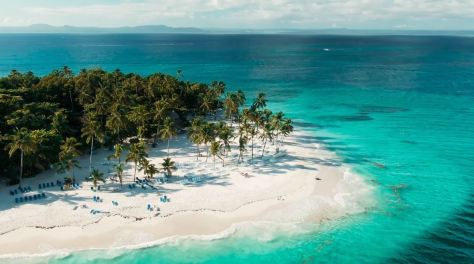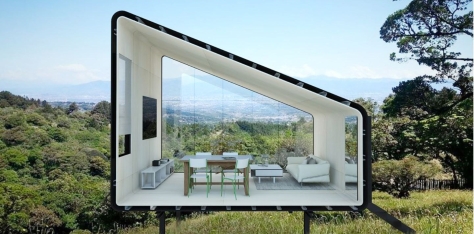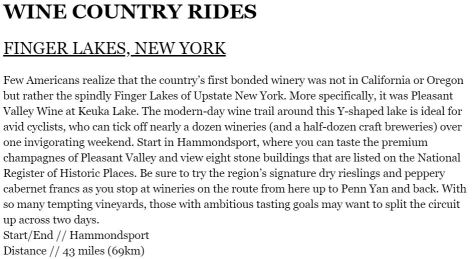Filmed and Edited by: Werney Beyer
Showreel: Over 300 destinations worldwide
 Alexander von Humboldt might not be a name you know, but you can bet you know his ideas. Back when the United States were a wee collection of colonies huddled on the eastern seaboard, colonists found the wilderness surrounding them scary.
Alexander von Humboldt might not be a name you know, but you can bet you know his ideas. Back when the United States were a wee collection of colonies huddled on the eastern seaboard, colonists found the wilderness surrounding them scary. It took a zealous Prussian explorer with a thing for barometers to show the colonists what they couldn’t see: a global ecosystem, and their own place in nature. In this  episode, we learn how Humboldt—through science and art—inspired a key part of America’s national identity.
episode, we learn how Humboldt—through science and art—inspired a key part of America’s national identity.
More fascinating Humboldt facts:
If you’re interested in learning more about the life and times of Alexander von Humboldt, I’d recommend reading Andrea Wulf’s book The Invention of Nature: Alexander von Humboldt’s New World.
But was this new ruler of a Maya city really from a separate culture? New techniques being used at the Tikal and Teotihuacan sites have revealed conflicting evidence as to whether Teotihuacan really held sway over a much larger region than previously estimated.
Sarah also talks with Rashid Sumaila, professor and Canada research chair in interdisciplinary ocean and fisheries economics at the University of British Columbia, Vancouver’s Institute for the Oceans and Fisheries. You may have heard of illegal fishing being bad for the environment or bad for maintaining fisheries—but as Sumaila and colleagues report this week in Science Advances, the illegal fishing trade is also incredibly costly—with gross revenues of between $8.9 billion and $17.2 billion each year.
Filmed and Edited by: Oliver Astrologo
Put your headphones on, sit back, relax and let yourself be immersed into the authentic Caribbean lifestyle following the rhythm of music and discover a land of culture, art and extraordinary colonial architecture!

This short film is the result of 16 extraordinary days of travel in #DominicanRepublic – from #SantoDomingo to the #Samaná Peninsula, discovering a plethora of unique landscapes: mountains, forests, cliffs, hidden beaches and mangroves!
Some of the locations featured in this video – Full map with coordinates and photos available here: oliverastrologo.com/dominicana-film-map
Santo Domingo, Juan Dolio, Bayahibe, Samaná, Cayo Levantado, Las Galeras (La Playita, Playa Rincon, El Fronton, Monte Azul), Cabrera (Río San Juan).
Note on cockfighting
Although this bloody sport is popular in the Dominican culture I’m personally averse to any “amusement” practice against every kind of animal. All YouTube proceeds from this video will be donated to the PETA association.
Original Score by Federico Coderoni | federico-coderoni.com/ | Lead guitar performed by Flavio Nati | fb.com/flavionatiguitar
The proposal is inspired by the experiences lived in the mountains of Costa Rica. The intimate nest form comes into communication with nature so that guests have privacy and dialogue with the space around them. Its flexible structure allows it to adapt to sloping terrain, dense forests and humid tropical climates.

The cabin includes all the electro-mechanical installations, the septic tank and the facilities necessary for its operation. The modulation of the cabins allows to make certain adjustments to shorten or enlarge the cab according to changing needs. The structure is lightweight in metal construction with an external lining in industrial zinc and internal walls in gypsum and densglass.
Planet Earth http://bit.ly/PlanetEarthPlaylist
From inside the book as seen on Amazon.com:

 This definitive companion for cycling enthusiasts showcases 200 of North, Central and South America’s best and most celebrated routes, from epic adventures off the beaten path to shorter urban rides. Go bikepacking in Baja, road riding in Colombia, mountain biking in Canada and gravel riding in Pennsylvania.
This definitive companion for cycling enthusiasts showcases 200 of North, Central and South America’s best and most celebrated routes, from epic adventures off the beaten path to shorter urban rides. Go bikepacking in Baja, road riding in Colombia, mountain biking in Canada and gravel riding in Pennsylvania.
Each ride is accompanied by stunning photos and a map and toolkit of practical details – where to start and finish, how to get there, where to stay and more – to help you plan the perfect trip. Suggestions for similar rides around the world are also included.
Rides in Canada include:
Rides in the USA include:
Rides in Central America & Caribbean
Rides in South America include: